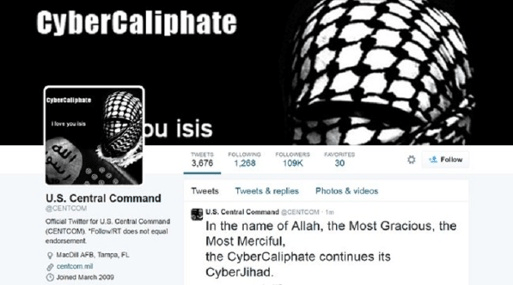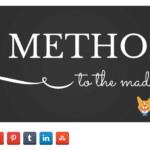
You can’t go 24 hours without hearing about ISIS (also known as ISIL, IS, and Islamic State), the extremist group that is spreading terror all over Iraq and Syria. They’ve apparently earned a recurrent slot in news networks and in our social networks’ feeds. Hostage beheadings, recruitment of Westerners, destruction of historic landmarks, and mass executions grant them headlines every now and then, but their social media activity grant them continuous coverage. For example, this year, only one other topic out-tweeted ISIS: Dressgate. Some have even argued that the extremists’ social media strategy can rival with that of the biggest brands in the world, but this seems like an oversimplification of the phenomenon.
While ISIS has been successful at maintaining its internet virality, mainly due to its presence on Twitter, ISIS cannot be compared to a brand. Like we argued in our Dressgate article, virality is something that can be planned but is really hard to achieve since its success depends on the audience’s receptivity. So, why is the Islamic State’s social media presence so strong? Are they really the social media mavens/gurus/ninjas that every company would kill to have or are they just lucky? By the amount of articles regarding this topic, we can safely say that there is no right answer. But, we’ll share with you our conclusions on the subject of ISIS’ virtual popularity.
1. Brand ambassadors
While we don’t consider ISIS to be a brand, we’ll stick to marketing nomenclature just for the sake of the discussion “Is ISIS’ social media strategy better than yours?” The Islamic State is now widely known for its success on Twitter, where its hashtags are consistently among the most popular. This is mistakenly seen as the proof of ISIS’ virality, since most of this Twitter activity comes from a few thousand accounts which compensate its lack of manpower with high volumes of Tweets. This is the first reason that ISIS has such a strong presence online but it’s also why it’s hard to compare the extremists to a company. Can you imagine Pepsi, Taco Bell, or Walmart having a couple thousand Twitter accounts firing dozens of daily tweets telling the world how great they are without spending a boatload of money or sounding like they were paying people to do that? We can’t either.

2. Clear Definition of the Ideal Customer
If there’s something that we’ve learned from our sales and marketing efforts it is that you have to figure out who your audience is. Otherwise, you’ll be spending a lot of time and money trying to reach every potential client that comes to your mind. Although ISIS broadcasts its messages in a wide and general manner, on a micro level the extremists are contacting people who are more likely to identify with their ideals and/or lifestyle. By portraying themselves as a righteous underdog who aims to destroy the oppressive Western lifestyle, they’re successfully setting the ideal tone to recruit young people who feel like a victim of that same lifestyle. ISIS targets young men and women who feel displaced in the societies they live in, usually immigrants or first-generation nationals who are unemployed or have precarious jobs. By giving them an opportunity to unleash their frustration against the society that marginalized them, the Islamic State has no problem in recruiting people from all over Europe, North America, Australia, and so on. Once again, this is something really hard to manufacture. Which kind of company offers products or services that align with a population’s core set of emotions? Not that many.

3. An attractive offer
The aforementioned opportunity of payback might be a very strong argument for people who feel like they’ve been treated like second class citizens. Yet, joining or supporting an emergent extremist army still sounds like a scary move. ISIS is removing that obstacle by humanizing itself. It’s doing so by allowing its members in the battlefield to share pictures of themselves eating candy, playing with cats or just relaxing under a tree. This tactic is completed with tweets from official ISIS accounts that consistently share images that show how inclusive the Islamic State is. Finally, there’s something you can copy: by humanizing your brand you can bring your audience closer to you and make it easier for them to engage with you and share your content throughout their social networks.

4. Bad news trumps good news all day
Every time you read or watch the news you get the feeling that the amount of crazy things that happen in this world is growing exponentially. Yet, that might not be the case. Simply, audiences prefer to read/watch bad news over good news and their favorite topics are war, terrorism, and natural disasters. While we think that there’s already too much negativity in this world, the truth is that such content is highly valued by most audiences. It is then easy to understand why ISIS is given so much attention. Yet, the Islamic State seems to be going beyond the “traditional” warfare — to which most audiences are becoming desensitized — by giving particular attention to topics that are quite sensitive in Western countries. It’s doing so by emphasizing its attack against homosexuals, Christians, and cultural heritage, for example. Not only are the extremists getting attention for their barbaric invasion of Iraq and Syria but they’re also making an effort to shock their enemies by mixing their attacks with recurrent themes on Western news.

5. ISIS is a femtorisk.
Yup, it’s a word. A femtorisk is a numerically small phenomenon capable of exerting an outsized impact on global politics. ISIS fits the definition at a military — with just a few thousand members, they’ve seized Mosul, a city with 1.5M people — social — a few thousand tweeters generate enough volume to gain the attention of the mainstream media — and religious level — it represents less than 1% of the world’s Islamic population but it has stirred a worldwide discussion about the religion. And this is ISIS’ greatest feat. The Islamic State was able to leverage news preferences, political agendas, and social networks generating this image of a worldwide threat that doesn’t match its physical capabilities.
Summary:
On one hand, we have to agree that ISIS is doing a brilliant job with their social media strategy. They’re constantly in the news. Talk about brand awareness. On the other hand, their sort of marketing won’t work for pretty much any other brand or organization. Because of this, we’d like to argue that they’re cheating. By cheating, we mean that they’re fueling these social media campaigns with activities that are beyond the reach of any organization based on a civilized country — even armed forces. They’re really good at capitalizing on mass executions, homophobia, religious and cultural intolerance, and hate in general, but that’s pretty easy. What’s really hard is to define an audience and engage it in a productive and constructive way, the way that most brands must do.
Two lessons we can learn from ISIS’ social media strategy:
1) Understand your audience and connect with them emotionally
2) Humanize your brand
The rest of ISIS’ social media tactics only work for them.
Interested in knowing more about Dark Social & Analytics?
[su_button url="https://getsocial.io" target="_blank" style="flat" background="#21D2B5" color="#ffffff" size="7" wide="no" center="yes" radius="auto" icon="" icon_color="#FFFFFF" text_shadow="none" desc="" onclick="" rel="" title="" id="" class=""]SIGN UP FOR FREE[/su_button]





